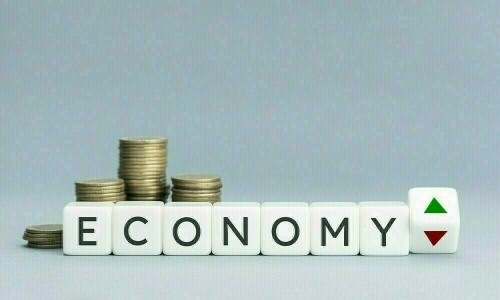Pakistan Economy to Regain Momentum in Second Half of FY25, Says SBP
The State Bank of Pakistan (SBP) has released its half-yearly report for 2024-25, projecting a resurgence in Pakistan’s economic growth during the latter half (January-June) of the current fiscal year. This optimistic forecast comes despite ongoing difficulties in the agriculture industry, as positive developments in manufacturing, services, and international trade provide a more encouraging outlook.
The economy experienced a 1.5% expansion in the first six months of FY25, in contrast to the 2.1% growth recorded during the corresponding period of the prior year.
“While growth decelerated in the first half of FY25 compared to last year, recent data from high-frequency indicators suggests that economic activity is picking up steam,” the central bank stated in its report, titled ‘The State of Pakistan’s Economy’.
Key indicators imply that the slowdown observed in the initial half of the year is giving way to a gradual yet consistent upturn in economic activity, bolstered by more accommodative financial conditions and decreasing global energy costs.
The real GDP growth forecast remains steady within the range of 2.5–3.5% for FY25.
According to the SBP’s analysis, recent figures reveal that the Purchasing Managers’ Index (PMI), a crucial gauge of manufacturing sector performance, climbed to 53.0 in February 2025, marking its highest level since August 2022.
Simultaneously, indicators of domestic demand, such as sales of automobiles, cement, and petroleum products, have increased, while exports of high value-added textiles have maintained their upward trajectory.
These trends suggest a recovery in the industrial and services sectors, which are anticipated to spearhead economic growth in the months ahead.
However, the agriculture sector continues to be a source of concern. Recent estimations point to a lower-than-anticipated wheat harvest, which introduces downside risk to overall gross domestic product (GDP) growth.
Consequently, “the real GDP growth projection remains unchanged in the range of 2.5–3.5% for FY25,” with risks skewed towards the downside because of agricultural underperformance and potential fiscal tightening.
Regarding domestic fiscal matters, the first half of FY25 exhibited improvements, primarily attributed to substantial profit transfers from the SBP and managed subsidy expenditures. Nonetheless, the fiscal deficit projection stays at 5.5–6.5% of GDP, as revenue shortfalls continue to pose a threat, as per the half-yearly report.
In the meantime, inflation is experiencing a notable decline. Owing to the easing of global and domestic commodity prices and the diminishing impact of a high base effect, “average inflation for FY25 has been significantly revised downward to 5.5–7.5%, from earlier estimates of 11.5–13.5%,” the SBP stated.
The present monetary and fiscal policy stance, in conjunction with sufficient food reserves, is expected to keep inflationary pressures in check in the near future.
Concerning the external sector, “the current account balance for FY25 is projected to be in the range of -0.5 to 0.5 percent of GDP.” This projection is supported by stronger-than-expected “growth in workers’ remittances, reduced commodity prices, and sustained export momentum.” Nevertheless, as imports rise concurrently with industrial demand, the economy remains susceptible to sudden surges in global commodity prices.
Looking forward, the economic perspective is subject to considerable external uncertainties. Escalating global protectionism, ongoing geopolitical tensions, and the potential resurgence of global inflation—resulting from supply chain disruptions and tariff-induced cost pressures—present substantial challenges for emerging economies like Pakistan.
While domestic recovery seems to be gaining momentum, particularly in non-agricultural sectors, long-term progress will hinge on both sound policy management and the evolving global economic environment.



Comments (0)
No comments yet. Be the first to comment!
Leave a Comment